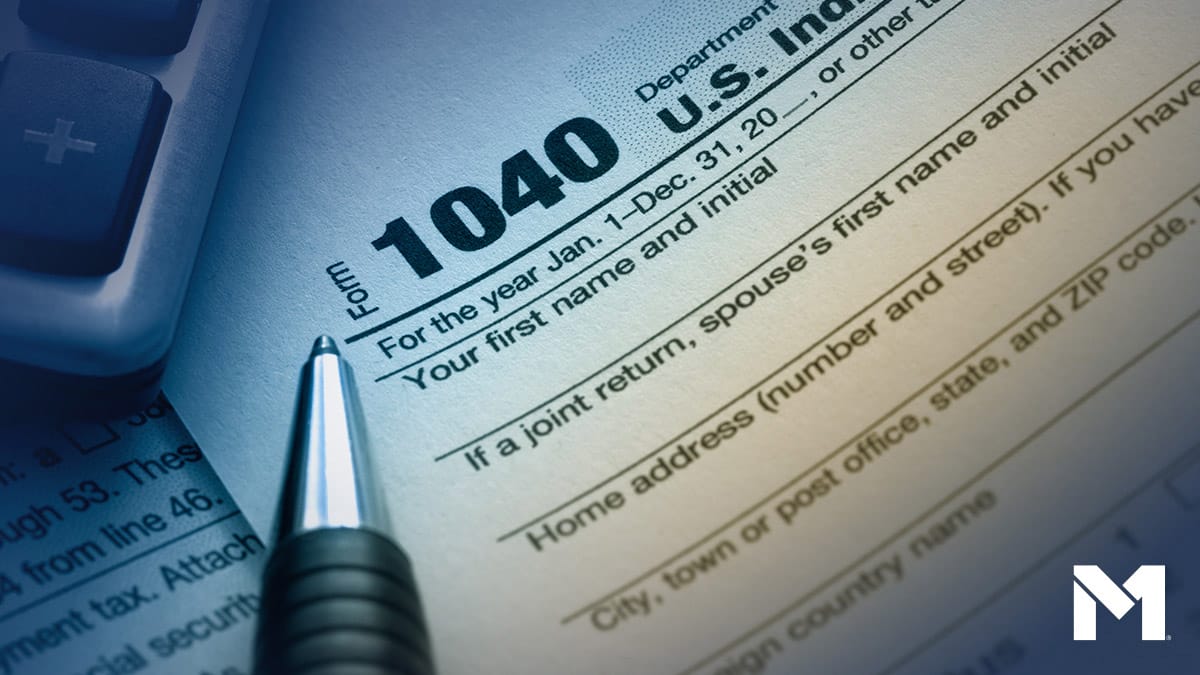What is the standard deduction?

The standard deduction is a fixed dollar amount set by the IRS that taxpayers can subtract from their gross income to reduce the amount of income subject to taxation.
The IRS gives taxpayers two choices when it comes to lowering their taxable income: choose the standard deduction or itemized deduction. While the standard deduction appeals to those seeking simplicity, itemizing deductions can save more money for taxpayers with substantial qualifying expenses.
How the standard deduction works
Standard deductions are relatively straightforward. Once taxpayers calculate their gross income, they can apply the fixed dollar amount of the standard deduction provided by the IRS. This deduction serves as a direct reduction to their taxable income, offering a simplified method for individuals to ease their tax burden.
The IRS sets different standard deduction amounts based on the taxpayer’s filing status each year. For example, as of the 2023 tax year, the standard deduction for a single filer is $13,850, while for a married couple filing jointly, it is $27,700.
Understanding how standard deductions work involves recognizing their general application. Regardless of specific expenses incurred throughout the year, all eligible taxpayers can benefit from this fixed deduction, providing a baseline reduction to their taxable income.
For example, consider a single filer with a gross income of $50,000. Applying the standard deduction of $13,850, their taxable income reduces to $36,150. This reduction now determines the portion of income subjected to federal income tax, thus minimizing their overall tax liability.
Standard deduction versus itemized deduction
The standard deduction offers a simpler approach for reducing a taxpayer’s taxable income by a fixed amount. It’s a blanket deduction available to all taxpayers, with the amount varying based on filing status.
Itemized deductions require taxpayers to list individual expenses, such as mortgage interest, medical expenses, and charitable contributions. While this can take time and effort, it may be worth it if their total itemized deductions surpass the standard deduction.
Standard deductions for 2022, 2023, and 2024
The amount of your standard deduction depends on the year as well as your tax-filing status.
| Filing status | 2022 standard deduction | 2023 standard deduction | 2024 standard deduction |
| Single | $12,950 | $13,850 | $14,600 |
| Married, filing separately | $12,950 | $13,850 | $14,600 |
| Married, filing jointly or widow | $25,900 | $27,700 | $29,200 |
| Head of household | $19,400 | $20,800 | $21,900 |
Additional standard deduction
Some taxpayers such as the blind or elderly (65 or older) can claim a higher standard deduction called an additional standard deduction.
| Filing status | 2022 | 2023 | 2024 |
| Single or head of household | |||
| 65 or older or blind | Add $1,750 | Add $1,850 | Add $1,950 |
| 65 or older and blind | Add $3,500 | Add $3,700 | Add $3,900 |
| Married filing jointly or married filing separately ($ per qualifying individual) | |||
| 65 or older or blind | Add $1,400 | Add $1,500 | Add $1,550 |
| 65 or older and blind | Add $2,800 | Add $3,000 | Add $3,100 |
Standard deduction for dependents
Dependents may get a lower standard deduction. For 2023, dependents can choose between $1,250 or their earned income plus $400. It cannot be more than the maximum standard deduction for the main tax filing.
In 2024, the standard deduction for dependents increases to $1,300, or earned income plus $450. It also cannot be more than the maximum standard deduction for the main tax filing.
Those not eligible for the standard deduction
Not everyone is eligible to claim the standard deduction.
- A married individual who is filing as married filing separately whose spouse itemizes deductions
- A nonresident alien or dual status alien
- Someone who files a return for less than 12 months due to a change in their annual accounting period
- Filing as an estate or trust
This article is for educational purposes only and should not be taken as tax advice. Speak to a licensed tax professional for tax advice.
Disclosures:
All examples above are hypothetical, do not reflect any specific investments, are for informational purposes only, and should not be considered an offer to buy or sell any products. M1 does not provide any financial advice.
All investing involves risk, including the risk of losing the money you invest. Brokerage products and services are offered by M1 Finance LLC, Member FINRA / SIPC, and a wholly owned subsidiary of M1 Holdings, Inc.
20240210-3289800-10564004
